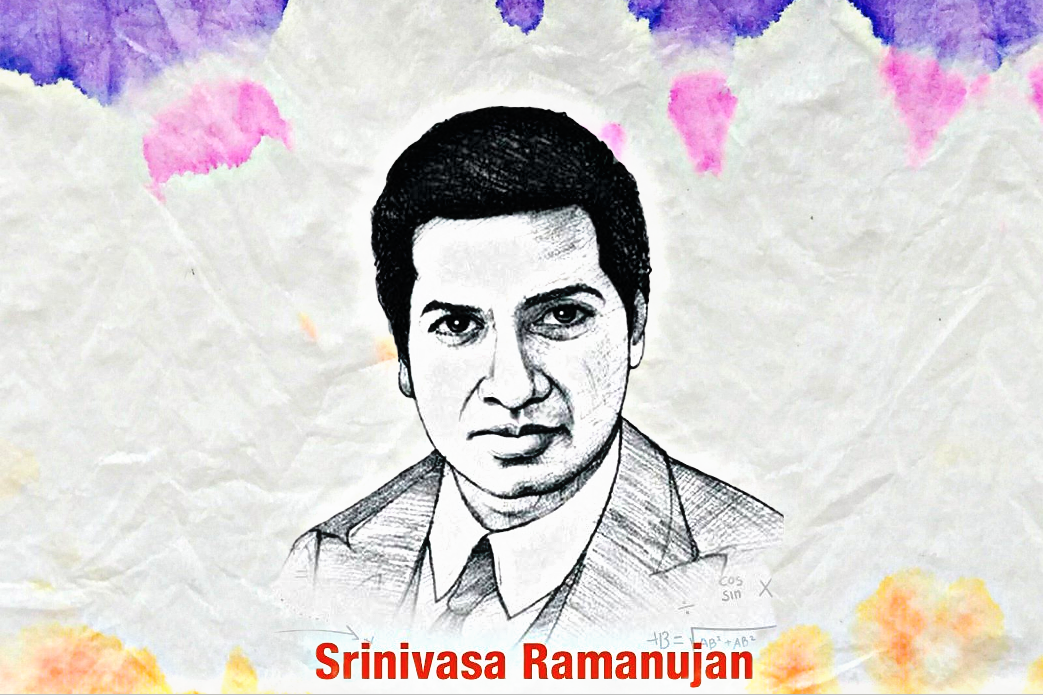Srinivasa Ramanujan (1887–1920) is one of the most remarkable mathematicians in history, not just for his achievements but for the sheer improbability of his story. Born in the small village of Erode in the Tamil Nadu state of India, Ramanujan’s life journey—from a largely self-taught genius to a Fellow of the Royal Society and Trinity College, Cambridge—has inspired generations of mathematicians and enthusiasts. His contributions to number theory, infinite series, and continued fractions were groundbreaking, and his story is as much about perseverance and passion as it is about extraordinary talent.
Early Life: A Spark Ignited
Srinivasa Ramanujan was born on December 22, 1887, in a modest Brahmin family in Erode. His father, K. Srinivasa Iyengar, worked as a clerk in a sari shop, and his mother, Komalatammal, was a homemaker and a devout Hindu. The family later moved to the town of Kumbakonam, known for its temples and academic traditions.
From an early age, Ramanujan displayed prodigious abilities in mathematics. By the time he was 11, he had mastered advanced arithmetic and had begun studying trigonometry independently. His mathematical journey truly began at the age of 15 when he encountered A Synopsis of Elementary Results in Pure and Applied Mathematics by G.S. Carr, a compilation of over 6,000 theorems without proofs. This book became his mathematical bible, and he absorbed its contents with fervor. Ramanujan’s approach to mathematics became deeply intuitive, often deriving results without rigorous proof, a hallmark of his later work.
The Struggles of a Genius
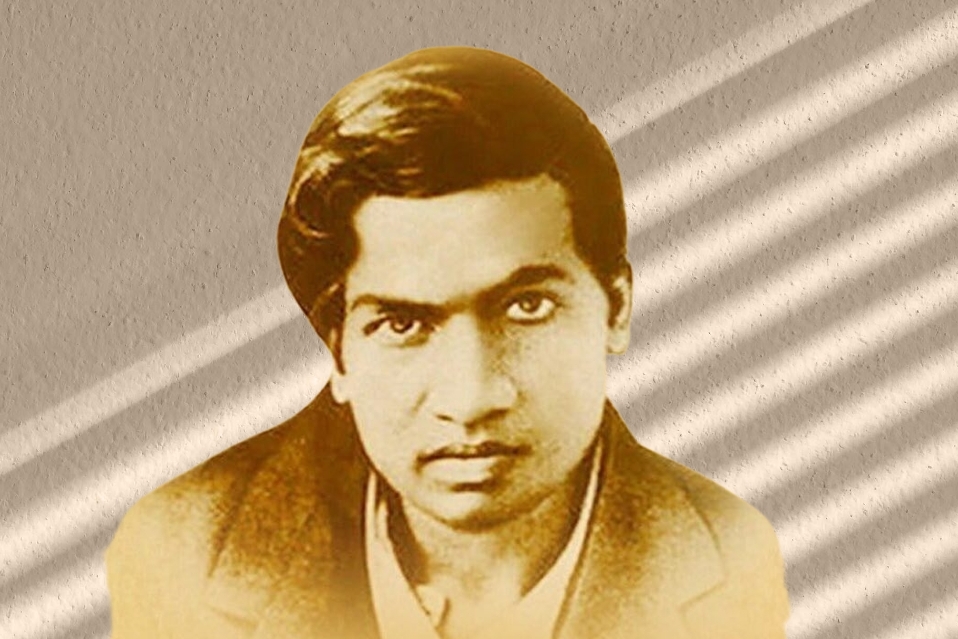
While his mathematical talents flourished, Srinivasa Ramanujan academic journey was anything but smooth. He was so absorbed in mathematics that he neglected other subjects, resulting in repeated failures in his college examinations. This academic downfall led to his dropping out of college, leaving him without a formal degree—a significant setback in a colonial India that valued British education credentials.
To support himself, Ramanujan took up a clerical job in the Madras Port Trust. Despite his modest position, his mathematical notebooks—filled with intricate formulas, theorems, and conjectures—began to attract attention from local academics. One of these admirers, Ramaswamy Aiyer, introduced Ramanujan to influential mathematicians in India, including S. Narayana Iyer, the secretary of the Indian Mathematical Society.
Encouraged by their support, Srinivasa Ramanujan began to correspond with mathematicians overseas. In 1913, he wrote a letter to G.H. Hardy, a prominent mathematician at Cambridge University. The letter included over 100 mathematical formulas and theorems, many of which were previously unknown to Hardy.
Collaboration with G.H. Hardy
Hardy, initially skeptical of Srinivasa Ramanujan claims, quickly realized the significance of the material. Hardy later described Ramanujan’s work as akin to having “all the machinery of modern analysis but combined with an amazing intuition.” He saw in Ramanujan an untapped genius whose methods were unconventional but undeniably powerful.
In 1914, Hardy arranged for Srinivasa Ramanujan to come to Cambridge. The transition was not easy. Ramanujan faced cultural isolation, dietary restrictions due to his strict vegetarianism, and the challenges of adapting to Western academic rigor. Despite these obstacles, the collaboration between Hardy and Ramanujan proved immensely fruitful.
Over the next five years, Srinivasa Ramanujan produced groundbreaking work in number theory, partition functions, and infinite series. One of his most celebrated contributions during this period was the Hardy-Ramanujan asymptotic formula for the partition of integers, a result that laid the foundation for modern computational mathematics. His work also included the development of Srinivasa Ramanujan tau function and his deep exploration of modular forms.
The Intuitive Genius: A Unique Approach to Mathematics
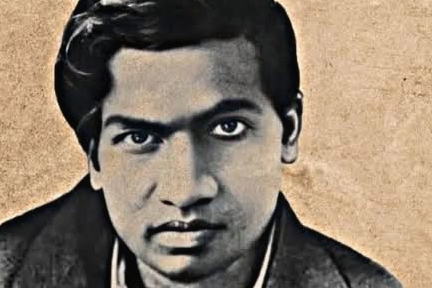
Srinivasa Ramanujan approach to mathematics was deeply intuitive and spiritual. He often credited his insights to divine inspiration, claiming that the Hindu goddess Namagiri revealed mathematical truths to him in dreams. Unlike many of his contemporaries, Srinivasa Ramanujan did not follow the traditional path of formal proofs. Instead, he relied on an almost mystical ability to see patterns and relationships, which he would later refine into precise mathematical expressions.
This intuitive method sometimes led to skepticism among his peers, particularly in the West, where rigorous proof was the gold standard. However, Hardy and others soon realized that Ramanujan’s results, even when lacking formal proof, were rarely incorrect. His notebooks, filled with thousands of formulas, continue to be a source of research and discovery even today.
Legacy in Mathematics
Srinivasa Ramanujan contributions spanned diverse areas of mathematics:
- Number Theory: His work on highly composite numbers and prime partitions is foundational. His formulas for estimating the number of partitions of integers remain central in combinatorics.
- Infinite Series: Ramanujan discovered remarkable series for π (pi) that have become integral to modern computational techniques. One such formula, involving rapidly converging series, is used in algorithms for computing π to millions of digits.
- Modular Forms and Functions: Srinivasa Ramanujan study of modular forms anticipated some of the most profound developments in 20th-century mathematics, including the proof of Fermat’s Last Theorem.
- Mock Theta Functions: His discovery of mock theta functions, introduced in one of his final letters to Hardy, continues to intrigue mathematicians and has connections to areas like string theory and black hole physics.
- Srinivasa Ramanujan Notebooks: The notebooks he left behind are treasure troves of unexplored mathematical ideas. Researchers are still deciphering the depth and implications of his work.
The Human Side of Srinivasa Ramanujan
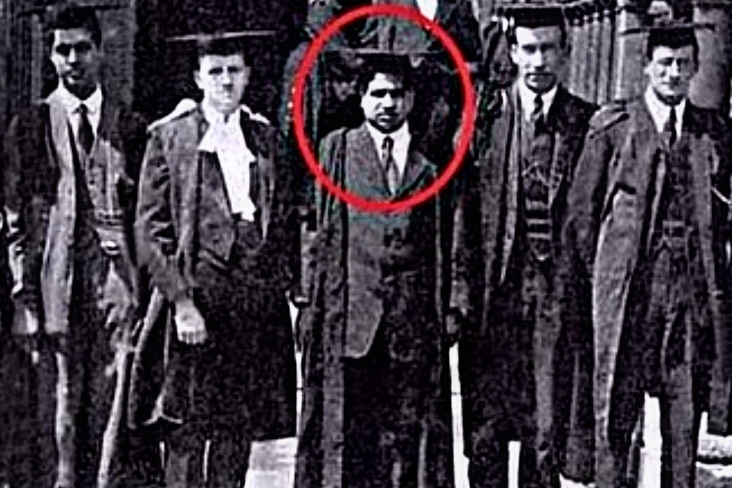
While Srinivasa Ramanujan mathematical achievements are well-documented, his personal life was filled with challenges. His marriage to Janaki Ammal was arranged when he was 21, but their relationship remained strained due to his immersion in mathematics and later, his prolonged stay in England.
Ramanujan was also deeply religious. He adhered strictly to Hindu rituals and dietary practices, even under challenging circumstances in England. His letters often reflected a blend of mathematical musings and spiritual reflections, revealing a man who saw no divide between the two.
The Cultural and Spiritual Influences on Srinivasa Ramanujan
Srinivasa Ramanujan approach to mathematics was deeply intertwined with his cultural and spiritual upbringing. Growing up in a devout Hindu household, he was immersed in the religious practices and traditions of his community. The town of Kumbakonam, with its numerous temples and sacred rituals, played a significant role in shaping his worldview.
Ramanujan often claimed that his mathematical ideas were not of his own making but were revealed to him by Namagiri, the deity of the Namakkal temple. This belief in divine inspiration was not merely rhetorical. He would often recount vivid dreams in which the goddess appeared to him, presenting him with mathematical insights. These experiences underline a profound synthesis of spirituality and intellectual pursuit, a harmony that is rare in the annals of scientific history.
The notion of mathematics as a divine language resonated deeply with Srinivasa Ramanujan. For him, mathematics was not a mere academic exercise but a spiritual quest to uncover the mysteries of the universe. This perspective not only fueled his creativity but also allowed him to transcend the limitations of formal education and the academic conventions of his time.
The Mathematical Journey: A Closer Look at His Contributions

Srinivasa Ramanujan mathematical work is astonishing not only for its depth and originality but also for the sheer breadth of topics he explored. Despite his lack of formal training, he made significant contributions to some of the most challenging areas of mathematics.
1. Partition Theory
One of Srinivasa Ramanujan most celebrated areas of work was partition theory, which deals with the ways in which integers can be expressed as the sum of positive integers. For example, the number 4 can be partitioned into 5 distinct forms: 4,3+1,2+2,2+1+1,1+1+1+14,3+1,2+2,2+1+1,1+1+1+1.
Srinivasa Ramanujan collaboration with Hardy led to the Hardy-Ramanujan formula, a groundbreaking asymptotic expression for estimating the number of partitions of an integer nn. This formula was a pioneering achievement, blending analytical and combinatorial methods in novel ways.
2. Modular Forms and q-Series
Srinivasa Ramanujan work on modular forms was ahead of his time, influencing developments in modern mathematics long after his death. His study of modular equations and their connection to elliptic functions was a precursor to the rich theory of modular forms that would emerge in the mid-20th century.
His investigation of q-series—a type of infinite series where terms are powers of a variable qq—produced results that still baffle mathematicians. His identities and conjectures in this field have found applications in combinatorics, physics, and even string theory.
3. Mock Theta Functions
In his last years, Srinivasa Ramanujan introduced the concept of mock theta functions, which are now recognized as a key component in the theory of modular forms. These functions were mysterious at the time, as they did not fit into the established framework of classical theta functions. Decades later, their significance was understood in the context of harmonic Maass forms, a discovery that validated Ramanujan’s intuition.
4. Infinite Series for ππ
Srinivasa Ramanujan derived some of the most elegant and efficient series for calculating the value of ππ. These series, characterized by their rapid convergence, have been used in modern algorithms to compute ππ to billions of decimal places. His approach combined deep analytical techniques with creative leaps that remain unparalleled.
5. Highly Composite Numbers
Srinivasa Ramanujan paper on highly composite numbers—numbers with more divisors than any smaller positive integer—was one of the few works he published during his lifetime. This study combined number theory with practical applications, influencing areas such as cryptography and algorithm design.
The Lost Notebooks: An Ongoing Mystery
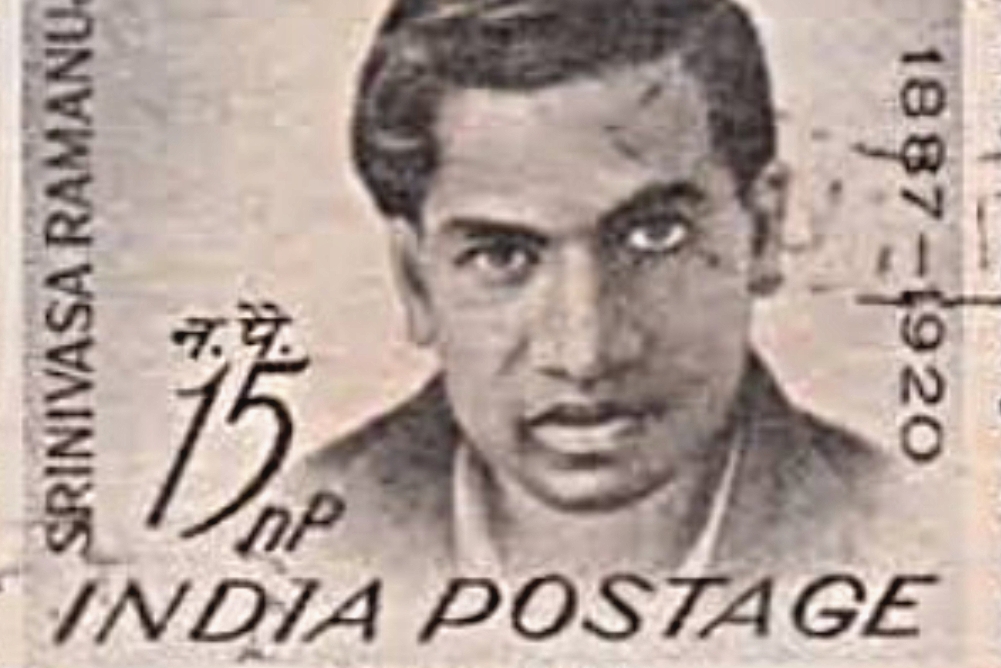
After Srinivasa Ramanujan death, mathematicians discovered his so-called “lost notebooks,” a collection of papers containing thousands of unpublished results. These notebooks, filled with intricate formulas and theorems, have been a source of fascination and research for decades.
The notebooks are remarkable for their diversity. They contain formulas that range from simple approximations to profound conjectures that continue to challenge modern mathematicians. For example, some entries hint at connections between prime numbers and modular forms, areas that remain at the frontier of mathematical research.
The Hardy-Ramanujan Collaboration: A Transformative Partnership
The relationship between G.H. Hardy and Ramanujan was one of mutual respect and admiration. Hardy, a staunch advocate of rigor and proof, was initially skeptical of Ramanujan’s methods. However, he quickly recognized the genius behind the unconventional approach. Hardy later wrote that Ramanujan was “a mathematician of the highest quality, a man who could have been the equal of Euler or Gauss if he had lived in a more favorable environment.”
Srinivasa Ramanujan work forced Hardy to reconsider some of his own assumptions about mathematics. Hardy’s efforts to mentor and refine Ramanujan’s talent without stifling his originality exemplify the best of academic collaboration.
The Challenges of Living Abroad
Srinivasa Ramanujan time in England was a period of intense intellectual growth but also profound personal struggle. The cultural and dietary restrictions he adhered to as a devout Hindu made life in wartime Britain difficult. His health deteriorated rapidly, exacerbated by the harsh climate, lack of adequate nutrition, and the emotional toll of isolation.
Despite these challenges, Ramanujan remained focused on his work. He was elected as a Fellow of the Royal Society in 1918, one of the youngest to receive the honor. He also became the first Indian to be elected as a Fellow of Trinity College, Cambridge.
Srinivasa Ramanujan Influence Beyond Mathematics
Srinivasa Ramanujan legacy extends far beyond his mathematical achievements. His life story has inspired countless individuals, particularly in India, where he is seen as a symbol of perseverance and intellectual brilliance. Films such as The Man Who Knew Infinity and books about his life have brought his story to a global audience.
In science and engineering, Ramanujan’s formulas have found applications in areas as diverse as quantum mechanics, string theory, and cryptography. His intuitive approach to problem-solving has influenced thinkers in fields where creativity and insight are paramount.
The Eternal Mystery of Srinivasa Ramanujan Mind
One of the most intriguing aspects of Ramanujan’s life is the mystery of his thought process. How did a largely self-taught mathematician develop insights that would elude even the most brilliant minds of his time? His reliance on intuition and his ability to leap across logical gaps remain subjects of fascination.
Mathematicians have speculated that Ramanujan’s deep engagement with abstract patterns and structures, combined with his spiritual worldview, gave him a unique perspective. He saw mathematics not as a set of problems to be solved but as an interconnected whole, a language that revealed the underlying order of the universe.
Srinivasa Ramanujan Philosophical and Cultural Legacy
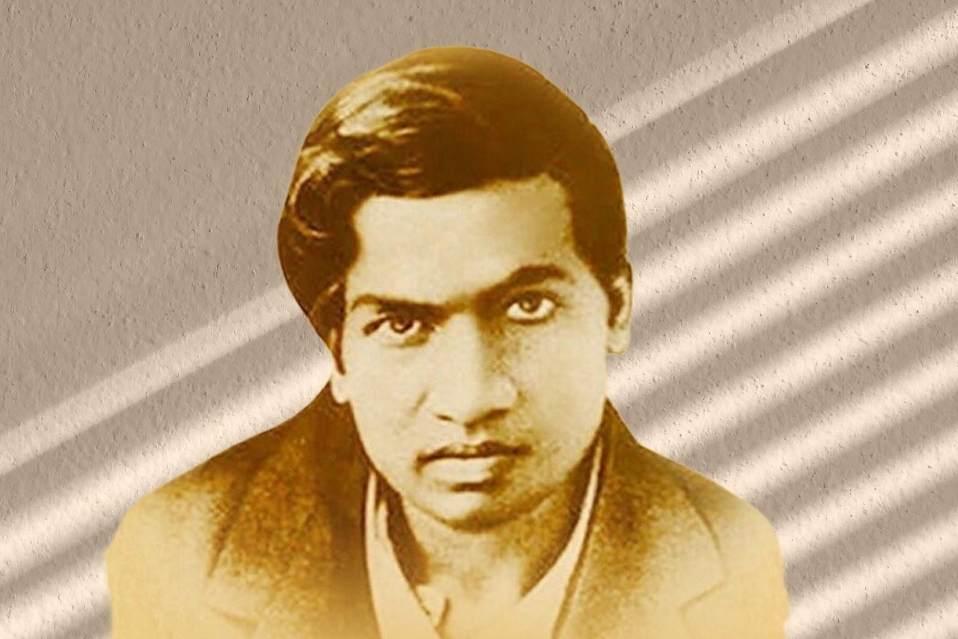
Ramanujan’s life is not just a story of mathematical brilliance; it is also a narrative rich in cultural and philosophical dimensions. He was a product of India’s traditional education system, where rote learning often took precedence over innovation. Yet, he managed to break free from these constraints through sheer curiosity and self-directed learning.
His belief that his mathematical insights were divinely inspired challenges conventional notions of how knowledge is acquired. This perspective has intrigued not only mathematicians but also philosophers and psychologists, who see in Ramanujan a rare blend of intuition, spirituality, and analytical prowess.
The Role of Intuition
Srinivasa Ramanujan reliance on intuition is a recurring theme in discussions about his life and work. While Western mathematical traditions often prioritize rigorous proofs, Ramanujan’s approach was more exploratory and instinctive. He frequently arrived at results without providing formal justifications, trusting his deep, almost subconscious understanding of mathematical structures.
This intuitive approach has been a subject of fascination and debate. Some see it as evidence of his genius, while others view it as a limitation that prevented him from gaining even greater acceptance during his lifetime. Regardless of the perspective, it is clear that Ramanujan’s intuition was extraordinarily accurate—a fact borne out by the correctness of most of his results.
Cinematic and Literary Portrayals
Srinivasa Ramanujan life has been the subject of numerous biographies, documentaries, and films. One of the most notable portrayals is the 2015 film The Man Who Knew Infinity, based on Robert Kanigel’s biography of the same name. The movie captures Ramanujan’s struggles and triumphs, as well as his collaboration with Hardy, bringing his story to a wider audience.
In literature, Ramanujan has been the inspiration for essays, novels, and even poetry. Writers often highlight the dichotomy of his life: a man who was at once deeply rooted in his cultural traditions and yet profoundly innovative in his intellectual pursuits.
Declining Health and Tragic End
Srinivasa Ramanujan health began to deteriorate during his time in England, exacerbated by malnutrition, the harsh climate, and possible tuberculosis. He returned to India in 1919, gravely ill, but continued working on mathematics until his last days. On April 26, 1920, Ramanujan passed away at the young age of 32.
Recognition and Posthumous Impact
Despite his early death, Ramanujan’s legacy has only grown with time. His work has influenced fields as diverse as number theory, physics, and computer science. He was posthumously awarded the title of Fellow of the Royal Society, and his life has inspired numerous biographies, films, and academic studies.
The Indian government has also celebrated his contributions. December 22, his birthday, is observed as National Mathematics Day in India. Institutions like the Ramanujan Institute for Advanced Study in Mathematics in Chennai continue to honor his memory.
Conclusion: A Legacy Beyond Mathematics
Srinivasa Ramanujan’s life is a testament to the power of human creativity and perseverance. His story transcends mathematics, embodying the triumph of raw genius over adversity. Ramanujan bridged worlds—culturally, academically, and spiritually—bringing together the mystical intuition of Indian tradition and the rigor of Western mathematical thought. Today, he remains a symbol of untapped potential, a reminder of what can be achieved when passion and intellect collide against all odds.

